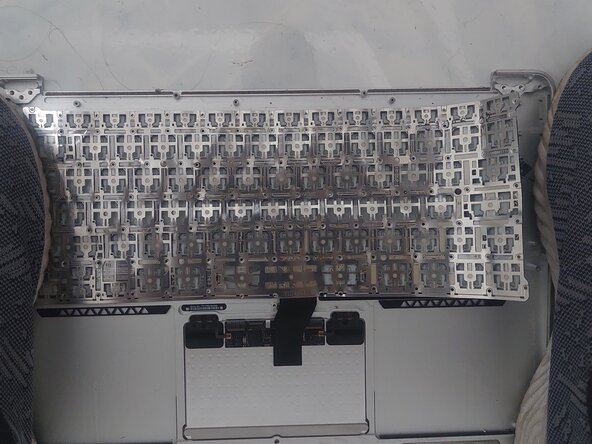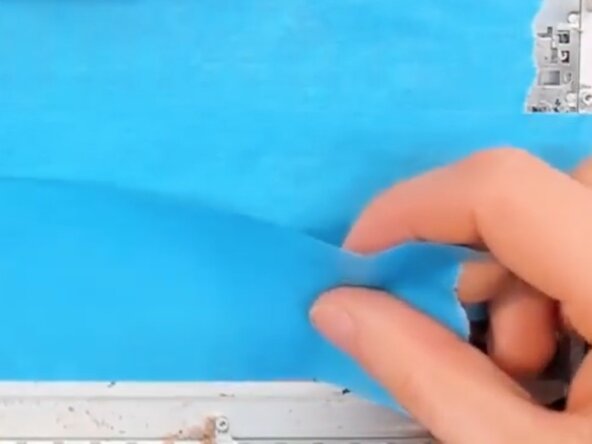crwdns2935425:04crwdne2935425:0






-
Once all of the screws are removed we are almost ready to remove the keyboard. We DO NOT want to bend the top case in any way shape or form, so we will FIRMLY STAND on the edges to prevent it lifting or moving as this could bend or deform the case which of course we do not want to happen.
-
It is STRONGLY advised to to put on a good pair of strong thick gloves so we can first lift up the edge of the keyboard and gently bend it back enough to get a good strong grip on it. The edges of the Keyboard are VERY SHARP and will easily slice through weak materials or skin, so EXTRA CAUTION is required.
-
You can alternatively just use an old rag or a thick strong cloth to protect yourself against what can be potentially severe cuts to your fingers and knuckles when removing the keyboard.
-
It is a good idea also to remove as many key caps as possible including their fixtures beforehand as it is always good to have some spares of these, especially if you are into repairing apple laptops or just in case your new keyboard suffers a damaged key in the future, as they will fly off everywhere when removing the keyboard.
-
You can also put a sheet of paper or plastic under the laptop to help prevent any scratches that may occur if the case moves during the big pull, a cloth or rag will allow some flex during the violent pulling away of the keyboard which can potentially disfigure the case, something we definitely need to avoid from happening.
-
Use can use some masking tape to completely cover the backside of the keyboard as this can help to catch all the rivet bits that will pop off when tearing out the keyboard.
-
Once you are set, get a TIGHT FIRM GRIP and just count to three.... 1-2-3 & RIP IT OUT in one go as fast as you can. Keys and rivets will fly everywhere so be prepared! The slower you do it the more chance there is of bending the casing or injury. Again, the edge of the keyboard is VERY SHARP and shows no mercy to hands & fingers.
-
Try not to pull upwards to much, instead pull at a level to the keyboard, as this will reduce upward stress on the case.
crwdns2944171:0crwdnd2944171:0crwdnd2944171:0crwdnd2944171:0crwdne2944171:0